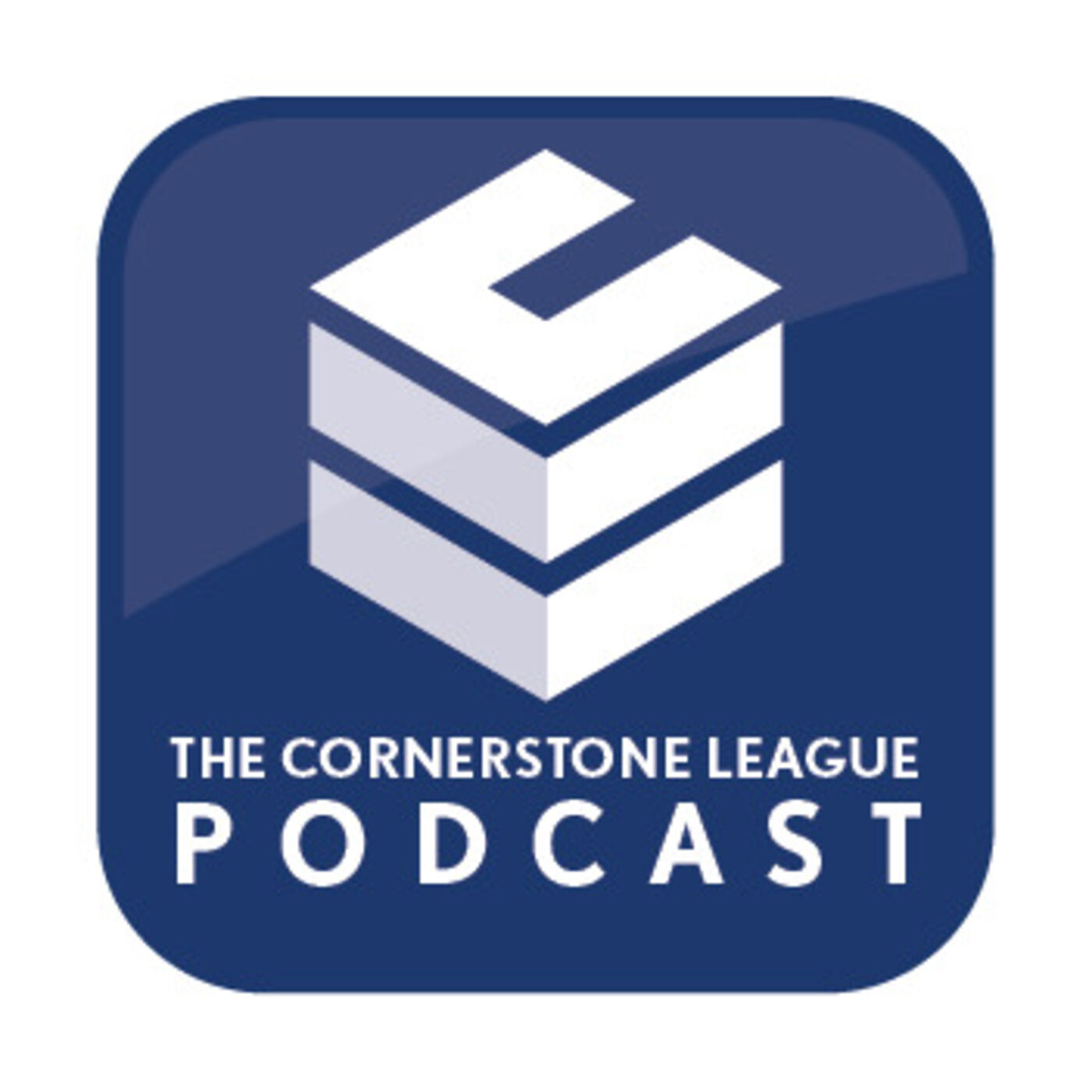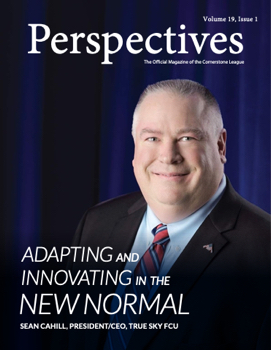

Successfully Navigating the LOS Experience to Meet Your Goals
Posted: Oct 4, 2022 | Author:
Brit Barker, SVP Sales for Origence
Just about every financial institution uses some type of core system to run its operations. Some credit unions (or even community banks) will try to tap the loan origination functionality that is built into their core system. However, as lenders grow, eventually, they have a “graduation moment” and realize they need a standalone loan origination platform to reach their current and future goals.
Choosing the Right LOS Provider
Dozens of loan origination systems (LOS) are available in the market, but only a handful are considered “leading contenders.” Some of the newer LOS providers struggle to make headway in the market because they have difficulty providing an easy, out-of-the-box solution. Implementation, therefore, takes a tremendous amount of effort. This is where the benefit of experience comes into play. An LOS provider with a history of collaborating with lending teams may better understand the unique strategic needs of financial institutions.
Financial institutions, by their nature, are risk averse. They want to be innovative, but they may not want to be the first on their block to try out a new system. They want to see a proven track record, one that can point to performance success.
A vital part of searching for a new LOS is the resources an institution has available. Those with large IT teams sometimes try to build their own platform, which can become complicated. It is essential to remember that a lending system has three types of users: potential borrowers/existing borrowers, the lending staff, and administrators of the platform. The LOS must enhance the experience for all those groups.
Getting the most out of a new LOS
New LOS technology is only as good as the processes it’s facilitating and automating. It may be tempting to purchase an LOS and quickly configure the system using the same old processes your team has used for years. However, to get the full advantage of new LOS technology, lenders should first identify operational pain points and then collaborate with the LOS provider to develop an implementation plan that fully taps best practices and modern configurations.
Application protocol interfaces, or APIs, are critical components in today’s modern LOS ecosystem. Simply put, the API is the gateway to a better loan origination process. It makes it possible for the LOS to reach out digitally to order and receive (connect and exchange) data from third parties and is then intelligent enough to process that data to keep the lending process moving forward. And although it is getting easier to exchange data, the process continues to evolve. A meaningful exchange of data is an area of focus for the industry to improve the process for all involved.
Common credit union challenges
One of the most frequent issues credit unions are trying to solve with their LOS is fraud security. The challenge is simply stated but difficult to execute: Validate the borrower’s identity without complicating the process. Lenders must find the sweet spot of collecting the correct information needed to grant the loan without adding undue friction in the application process for the user.
A variety of third-party providers can be implemented within the platform to minimize fraud. Lenders would need to consider risk tolerance, loan or account type, and cost considerations for applying multiple layers of security—such as multi-factor authentication and device authentication.
Some financial institutions create an application experience that tries to address every type of loan. This one-size application is no longer relevant and can cause problems for members applying online. For example, an astute credit union might only need to ask three questions to issue a $1,000 credit card but may need 15 questions to book a $100,000 HELOC. Not all loans are created equal.
A dynamic borrower experience that is responsive and empowers a borrower on devices of their choice (laptop, tablet, mobile) is essential. Moreover, the research, application, and post-application process should be intuitive and help lenders identify where borrowers are exiting the process. Enabling lenders to configure and adjust this application experience at their discretion facilitates the lenders’ ability to refine their process.
The answer is to tailor the journey to the borrower and loan type. Realize there is a different borrower experience for every type of loan. Create a journey map, which will allow you to make sure all the questions being asked are relevant and applicable. You don’t want your member sitting frustrated and thinking, “I am a current member applying for an auto loan; why are you asking me for references?”
On a similar note, ensure your system is only showing members the products they will qualify for. Lead them on a borrower journey that makes sense. In the case of a new member joining the institution, eligibility parameters might have been met by reviewing where the borrower works or lives. Additionally, the loan application information empowers an institution to present a suite of accounts that a potential member will qualify for.
Yet another important consideration is knowing your internal goals as a credit union. How many dollars are you looking to lend? How many new members do you want to add? In addition to goals and measurements, integration efficiencies are crucial. Confirm with your LOS provider that the system can send the pertinent data and documents to all the right places. This includes boarding properly to the core system, feeding the data warehouse for reporting, and populating the imaging system with documents that are sorted and stacked properly. Knowing the answers to those types of questions will help you have the right conversations with potential LOS providers.
Finally, your credit union must have the capacity to switch platforms. It can take from four-to-six months to fully implement a new system, with a great deal of effort needed from multiple departments. Ensure that department heads are aligned with the LOS implementation project and will provide bandwidth to key personnel. The number one reason implementation projects are delayed is due to lenders not being able to test, evaluate, and provide feedback on project milestone goals.
Your LOS provider should be your partner
A loan origination system is vital to a credit union, meaning a change is a massive moment for all involved. It might take 120 days to make the decision, which may include your provider showing how the system works several times. Credit unions need to make sure they partner with a company that will be there for them throughout the entire process, from sales to implementation to follow-up.
One best practice is for the provider to give the lending team a deep system evaluation process. Together the provider and the lender can set a schedule that includes a “discovery conversation” to ask where the pain points are with their current system. Additionally, this discovery session enables the provider to identify the lender’s strategic needs and essential third-party providers. Then with this information, the provider can tailor a demo that caters to the lender’s challenges and ensures the new system can knock down all those blocking points. Each lender has its hot buttons, and the provider must speak to those. The credit union should be open-minded, working to create a new, better lending experience.
A quality LOS allows borrowers several self-service functions, right up to the point of disbursement. These functions include checking loan status, uploading documents to clear stipulations, and funding a new share account. The LOS should make sure the applicant is eligible for a loan and is a member. For a non-member, the LOS creates a simplified path by getting them into the credit union and then on to a loan without applying twice—loan and account in one experience.
Credit union service originations (CUSOs) drive innovation
Of the major LOS providers to credit unions, Origence is the only one that is a true CUSO. There are benefits to working with a CUSO, such as deep industry knowledge, as well as a better understanding of the voice of the member. Providing an LOS implementation process that incorporates best practices accumulated from hundreds of client engagements, while also leveraging relationships developed through our years of experience, gives credit unions a real marketplace advantage from implementation to originating loans.
Discover how Origence can help you navigate the LOS experience.
Choosing the Right LOS Provider
Dozens of loan origination systems (LOS) are available in the market, but only a handful are considered “leading contenders.” Some of the newer LOS providers struggle to make headway in the market because they have difficulty providing an easy, out-of-the-box solution. Implementation, therefore, takes a tremendous amount of effort. This is where the benefit of experience comes into play. An LOS provider with a history of collaborating with lending teams may better understand the unique strategic needs of financial institutions.
Financial institutions, by their nature, are risk averse. They want to be innovative, but they may not want to be the first on their block to try out a new system. They want to see a proven track record, one that can point to performance success.
A vital part of searching for a new LOS is the resources an institution has available. Those with large IT teams sometimes try to build their own platform, which can become complicated. It is essential to remember that a lending system has three types of users: potential borrowers/existing borrowers, the lending staff, and administrators of the platform. The LOS must enhance the experience for all those groups.
Getting the most out of a new LOS
New LOS technology is only as good as the processes it’s facilitating and automating. It may be tempting to purchase an LOS and quickly configure the system using the same old processes your team has used for years. However, to get the full advantage of new LOS technology, lenders should first identify operational pain points and then collaborate with the LOS provider to develop an implementation plan that fully taps best practices and modern configurations.
Application protocol interfaces, or APIs, are critical components in today’s modern LOS ecosystem. Simply put, the API is the gateway to a better loan origination process. It makes it possible for the LOS to reach out digitally to order and receive (connect and exchange) data from third parties and is then intelligent enough to process that data to keep the lending process moving forward. And although it is getting easier to exchange data, the process continues to evolve. A meaningful exchange of data is an area of focus for the industry to improve the process for all involved.
Common credit union challenges
One of the most frequent issues credit unions are trying to solve with their LOS is fraud security. The challenge is simply stated but difficult to execute: Validate the borrower’s identity without complicating the process. Lenders must find the sweet spot of collecting the correct information needed to grant the loan without adding undue friction in the application process for the user.
A variety of third-party providers can be implemented within the platform to minimize fraud. Lenders would need to consider risk tolerance, loan or account type, and cost considerations for applying multiple layers of security—such as multi-factor authentication and device authentication.
Some financial institutions create an application experience that tries to address every type of loan. This one-size application is no longer relevant and can cause problems for members applying online. For example, an astute credit union might only need to ask three questions to issue a $1,000 credit card but may need 15 questions to book a $100,000 HELOC. Not all loans are created equal.
A dynamic borrower experience that is responsive and empowers a borrower on devices of their choice (laptop, tablet, mobile) is essential. Moreover, the research, application, and post-application process should be intuitive and help lenders identify where borrowers are exiting the process. Enabling lenders to configure and adjust this application experience at their discretion facilitates the lenders’ ability to refine their process.
The answer is to tailor the journey to the borrower and loan type. Realize there is a different borrower experience for every type of loan. Create a journey map, which will allow you to make sure all the questions being asked are relevant and applicable. You don’t want your member sitting frustrated and thinking, “I am a current member applying for an auto loan; why are you asking me for references?”
On a similar note, ensure your system is only showing members the products they will qualify for. Lead them on a borrower journey that makes sense. In the case of a new member joining the institution, eligibility parameters might have been met by reviewing where the borrower works or lives. Additionally, the loan application information empowers an institution to present a suite of accounts that a potential member will qualify for.
Yet another important consideration is knowing your internal goals as a credit union. How many dollars are you looking to lend? How many new members do you want to add? In addition to goals and measurements, integration efficiencies are crucial. Confirm with your LOS provider that the system can send the pertinent data and documents to all the right places. This includes boarding properly to the core system, feeding the data warehouse for reporting, and populating the imaging system with documents that are sorted and stacked properly. Knowing the answers to those types of questions will help you have the right conversations with potential LOS providers.
Finally, your credit union must have the capacity to switch platforms. It can take from four-to-six months to fully implement a new system, with a great deal of effort needed from multiple departments. Ensure that department heads are aligned with the LOS implementation project and will provide bandwidth to key personnel. The number one reason implementation projects are delayed is due to lenders not being able to test, evaluate, and provide feedback on project milestone goals.
Your LOS provider should be your partner
A loan origination system is vital to a credit union, meaning a change is a massive moment for all involved. It might take 120 days to make the decision, which may include your provider showing how the system works several times. Credit unions need to make sure they partner with a company that will be there for them throughout the entire process, from sales to implementation to follow-up.
One best practice is for the provider to give the lending team a deep system evaluation process. Together the provider and the lender can set a schedule that includes a “discovery conversation” to ask where the pain points are with their current system. Additionally, this discovery session enables the provider to identify the lender’s strategic needs and essential third-party providers. Then with this information, the provider can tailor a demo that caters to the lender’s challenges and ensures the new system can knock down all those blocking points. Each lender has its hot buttons, and the provider must speak to those. The credit union should be open-minded, working to create a new, better lending experience.
A quality LOS allows borrowers several self-service functions, right up to the point of disbursement. These functions include checking loan status, uploading documents to clear stipulations, and funding a new share account. The LOS should make sure the applicant is eligible for a loan and is a member. For a non-member, the LOS creates a simplified path by getting them into the credit union and then on to a loan without applying twice—loan and account in one experience.
Credit union service originations (CUSOs) drive innovation
Of the major LOS providers to credit unions, Origence is the only one that is a true CUSO. There are benefits to working with a CUSO, such as deep industry knowledge, as well as a better understanding of the voice of the member. Providing an LOS implementation process that incorporates best practices accumulated from hundreds of client engagements, while also leveraging relationships developed through our years of experience, gives credit unions a real marketplace advantage from implementation to originating loans.
Discover how Origence can help you navigate the LOS experience.

